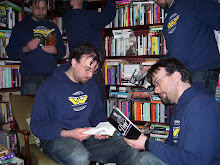
Shared meals can be joyous occasions, but what would you eat at your last one?
One of my favourite art books in recent years is a small, lavish silver volume called Last Supper. It contains artists’ impressions of Jesus Christ’s final meal with his disciples, from the early sixth century through to a few years ago. The artists on show are as varied as Leonardo da Vinci and Andy Warhol, and it is a stunning record.

While French fries and burgers are a popular last meal for prisoners on death row nowadays, according to Brian D. Price in Meals to Die For (a book that details final food requests at a Texas prison and includes such ghoulish recipes as chopping block cheeseburger), Christ chose two simple life-giving items: bread and wine.

I sometimes wonder if we take communion as he intended. Bread and wine (and other grain staples and fermented drinks) are almost universal in their importance, and I think he chose them so we would remember him daily, or more frequently, as we eat and drink them. Instead, people tend to consume small symbols: wafers, or neat squares of white bread, and shots of grape juice, wine or port.
In Last Supper, as we move from intricate mosaic, to ivory relief, to illuminated manuscript, we learn how to identify Jesus and each of his disciples by their position at the table and colour of their haloes.
Judas, the betrayer, we are told, has a black or missing halo or is shown reaching out to a dish on the table. John is depicted in a reclining position, looking almost as if he is sleeping through this pivotal event. Peter is old and wise with grey or white hair and beard, and he is often seated near Jesus. We read that this shows his superiority and role as founder of the Catholic Church.
In a striking red and mauve illuminated manuscript from 1140, a small black devil perches on the end of the bread as Jesus gives it to Judas, symbolising the evil Judas is about to do.
I love these beautiful records of this most famous meal and wonder what it was like to be there. Salvador Dali’s work from 1955 depicts Jesus’ torso hovering above the meal. The lean outstretched arms suggest the pain and sacrifice to come, as the disciples bow and pray. What were they saying?

Sharing food can create such joyous occasions that I also want to record them. My humble red book lists every guest who visits our house for a meal and some of the more memorable dishes my husband and I have shared together. I get great satisfaction from recording the food and wine that helped make our time with friends and family special. I even note something of my guests’ likes and dislikes for future reference.
I recently read Last Dinner on the Titanic by Rick Archbold and Dana McCauley, and it seems the final dinner for passengers in the first-class dining saloon was a sumptuous 11-course affair. The menu included oysters, cream of barley soup, poached salmon with mousseline sauce, filets mignons lili, roast duckling with apple sauce, punch romaine, roast squab and cress, asparagus salad, foie gras, and peaches in chartreuse jelly. No wonder the ship sank!

My fantasy last meal is rather less elaborate, and it changes often. Today it might be spaghetti with slices of tender potato and green beans drizzled with garlicky pesto, followed by lemon-curd ice-cream and fresh berries, with a chocolate truffle or two to finish off. A simple Greek dish of pasta, yoghurt, caramelised onions, and sheep’s-milk cheese would make a perfect culinary ending for me too.
Some of my most special meals pre-date my obsession with records. A few years ago, I revived the idea of a progressive dinner with friends. I had attended one in the early 1980s as a child with my parents. I remember walking into a dim but warm and inviting house in Echunga for a church dinner. The hosts had laid out a buffet feast for the main course. I cannot recall the other courses. I suspect I’d become a caterpillar-like creature, warm and drowsy in my sleeping bag, by the dessert house.
Our progressive dinners with friends have been smaller, with each of the three couples hosting one perfect course in their home. As enjoyable as normal dinner parties are, a sense of dread can descend upon hosts at any stage. Preparing more dishes than one usually undertakes can provoke panic, and what about all that washing up? With a progressive dinner, each couple is liberated from this burden, as they have only one dish to prepare and clean up after.
I tried to wow my guests with cute, fashionable architectural creations (petite tart shells piled high with rosy cherry tomatoes and bocconcini) or three-part desserts (lemon and lime ice-cream with tangy lemon syrup and shortbread). However, it was our friends who reached into the past for fried ice-cream, something I hadn’t encountered since childhood visits to Chinese restaurants, which really impressed. They served this crunchy-battered treat with caramel sauce, laced with Cointreau. Another time, they poured two thick soups side by side into bowls before serving them – very retro and fun. Other friends experimented with long tendrils of home-made pasta, and just imagining their effort in preparing it made the dish taste even better.
Yet for all the luxury ingredients and fancy cooking available to create memorable meals, the simplicity and powerful symbolism of the bread and wine remains.
(Bread and wine photo by Gary Scott)




5 comments:
Wow! thanks for that!
Thanks, Steph.
not relevant but nice anyway :
http://weloveyouso.com/wp-content/uploads/irismurdoch.jpg
That's a great cover--thanks for the link. Not enough literary/philosophical fiction looks like that these days.
Post a Comment